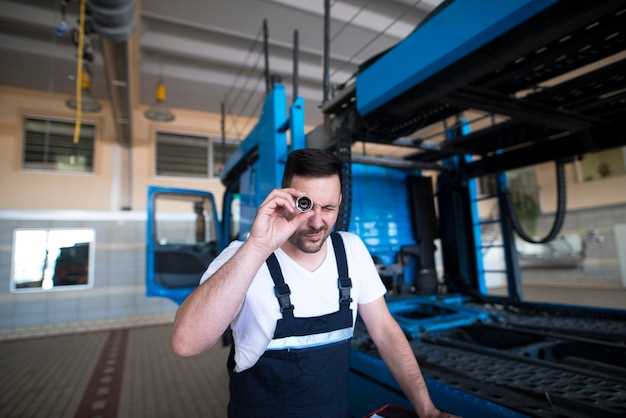
When it comes to automotive design, the frame of a car plays a critical role in determining its overall performance, safety, and durability. The choice of materials used in the frame construction is fundamental, as it not only influences the weight and strength of the vehicle but also impacts fuel efficiency and handling. Understanding the basics of vehicle frame construction can help consumers make informed decisions about car performance and longevity.
Car frames can be constructed using a variety of materials, including steel, aluminum, and composite materials. Each of these materials offers distinct advantages and disadvantages, resulting in differences in cost, repairability, and impact resistance. For instance, while steel frames are known for their strength and durability, aluminum frames provide a lighter alternative that can enhance fuel efficiency without compromising safety.
In an era of increasing environmental concerns and technological advancements, the evolution of vehicle frame construction is constantly progressing. Manufacturers are exploring innovative materials and designs to improve safety standards while reducing the environmental impact of cars. By gaining an understanding of these construction basics, enthusiasts and potential car buyers alike can appreciate the intricate balance between performance and sustainability in modern automotive engineering.
Types of Car Frames: A Comparison of Body-on-Frame and Unibody Designs
When it comes to vehicle construction, the frame plays a crucial role in determining the overall strength, weight, and safety of the car. There are two primary types of car frames: body-on-frame and unibody. Understanding the differences between these two designs can help consumers make informed decisions. Below is a detailed comparison of both frameworks.
Body-on-Frame Design

The body-on-frame construction method consists of two distinct structural parts: a robust frame that forms the chassis and an independent body that sits on top. This design has been a traditional approach, especially in trucks and SUVs.
- Pros:
- High durability and strength, better for towing and heavy loads.
- Ease of repairs and modifications due to separate components.
- Excellent off-road capability, as the frame can withstand rough terrain.
- Cons:
- Heavier structure, which can lead to lower fuel efficiency.
- Higher center of gravity may affect stability.
- Greater potential for cabin vibrations transferred from the frame.
Unibody Design
The unibody design integrates the frame and body into a single cohesive unit. This method is commonly used in modern sedans and crossover vehicles, aiming for a balance between strength and weight efficiency.
- Pros:
- Lighter weight leads to improved fuel efficiency.
- Enhanced structural integrity and safety, with crumple zones designed for impact absorption.
- Smoother handling and better overall ride quality due to lower center of gravity.
- Cons:
- Less suited for heavy towing or off-road performance.
- More complex repairs may require specialized tools and expertise.
- In case of damage, the entire unit may need replacement, which can be costlier.
Conclusion

Both body-on-frame and unibody designs have their own set of advantages and disadvantages. The choice between the two often depends on the intended use of the vehicle. If durability and off-road capabilities are prioritized, a body-on-frame car may be the better option. Conversely, if fuel efficiency and ride comfort are more important, then a unibody construction would likely be the ideal choice.
Common Materials Used in Vehicle Frame Construction: Strength and Weight Considerations
In vehicle frame construction, the choice of materials plays a crucial role in determining the balance between strength and weight. The most common materials used include steel, aluminum, and composite materials, each offering distinct advantages and drawbacks.
Steel is traditionally favored for its high strength and durability. It is capable of withstanding significant impacts and providing structural integrity. Additionally, steel frames are often more cost-effective compared to alternatives. However, the downside is that steel is relatively heavy, which can impact the overall weight of a car and, consequently, fuel efficiency.
Aluminum has gained popularity due to its lightweight properties. Cars with aluminum frames benefit from improved fuel efficiency and higher performance due to reduced weight. Moreover, aluminum demonstrates good resistance to corrosion, extending the vehicle’s lifespan. However, aluminum can be more expensive and may not provide the same level of strength as steel, necessitating careful engineering to ensure safety standards are met.
Composite materials, such as carbon fiber and fiberglass, offer an innovative alternative. These materials are incredibly lightweight while providing considerable strength. They can be molded into complex shapes, allowing for design flexibility. The main challenge with composites is their higher manufacturing costs and limited repairability compared to metals.
In conclusion, the selection of materials for a car frame involves a careful consideration of strength and weight. Steel, aluminum, and composite materials each have specific benefits that cater to different performance requirements and production budgets. The ongoing development in material science continues to influence the future of vehicle frame construction, focusing on enhancing performance while ensuring safety and efficiency.
Impact of Frame Design on Vehicle Performance and Safety Features
The frame of a car serves as its structural backbone, playing a crucial role in both performance and safety. A well-engineered frame design directly influences how a vehicle responds to different driving conditions, impacting handling, stability, and overall agility.
Performance attributes are significantly affected by the type of frame used in vehicle construction. For instance, a unibody design, where the frame and body are integrated, results in a lighter car, enhancing fuel efficiency and acceleration. In contrast, a body-on-frame structure offers greater rigidity and durability, which can be beneficial for larger vehicles used for towing or off-road driving.
Moreover, the frame design contributes to safety features in various ways. A well-designed frame can absorb and dissipate energy during a collision, minimizing the impact on passengers. Crumple zones, often integrated into the frame design, help manage crash impacts by allowing parts of the car to deform in a controlled manner, protecting the integrity of the cabin area.
Furthermore, the choice of materials used in the frame construction influences both weight and strength. High-strength steel and aluminum alloys are commonly utilized to enhance both performance and safety without adding excessive weight. The frame’s ability to withstand torsional and bending stresses directly correlates to how well it maintains passenger protection in extreme situations.
In summary, frame design is pivotal in determining a car’s performance characteristics and its safety features. Engineers must carefully consider these aspects during the design process to ensure that vehicles meet performance expectations while providing maximum protection for occupants.



